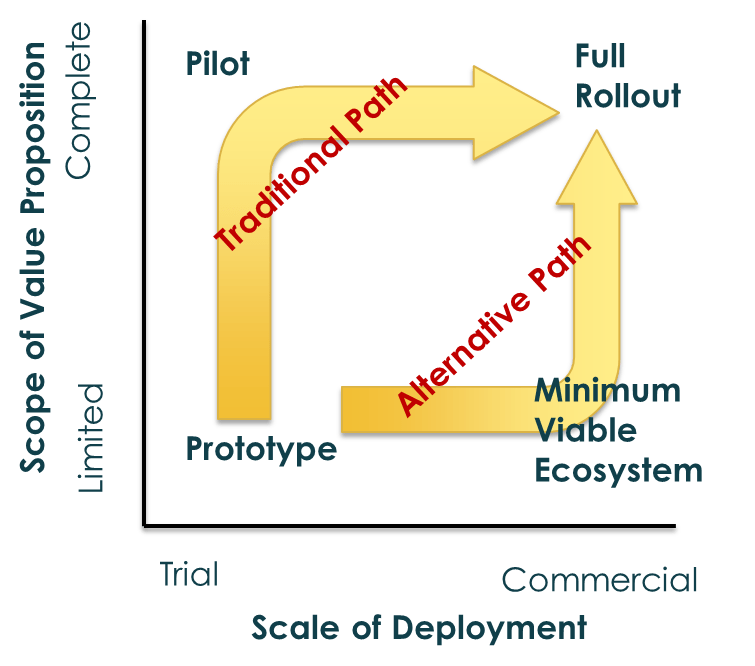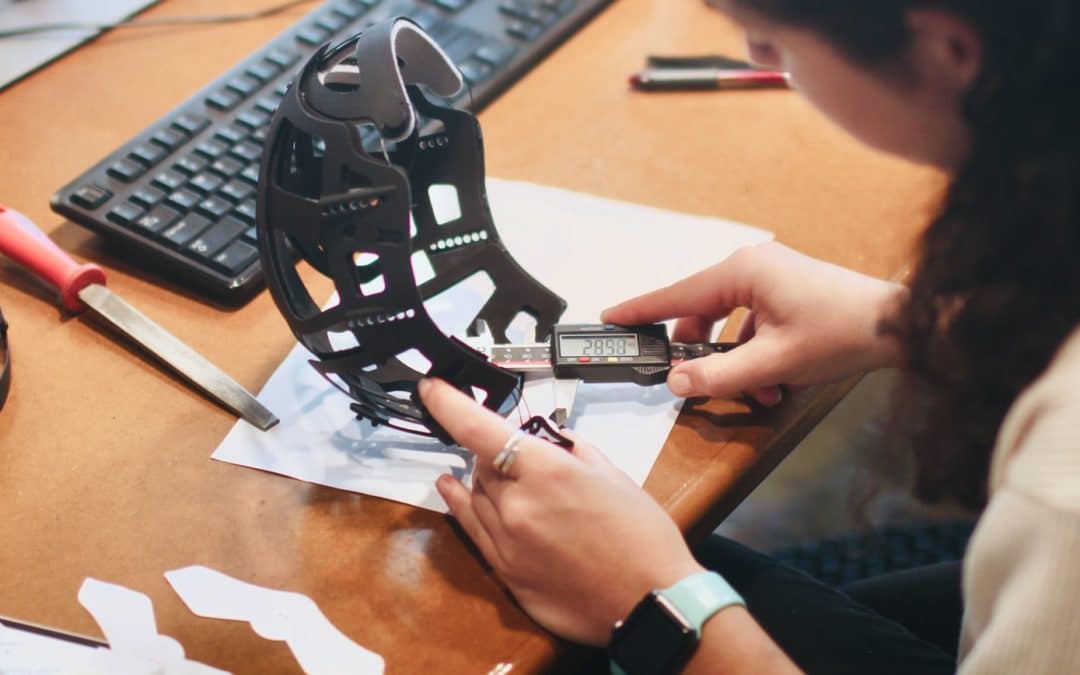At the recent Back End of Innovation conference, Ron Adner, author of The Wide Lens, gave real insight into one of the holy grails of innovation: how can you be successful when you need to create a new ecosystem?
The almost tired example of the iPod illustrates what is possible: Apple created an ecosystem around its iPod, iTunes and music companies that let it build a strong position and then get a dominant position at the center of an ecosystem around the iPhone. Ron also shows, using examples like Michelin’s fabulous Run Flat Tire that failed due to ecosystem complications.
More typical situations include any innovation in the value chain, where parties upstream and downstream from you may have to change for the customer to experience your new value proposition.
Ron suggests a new business strategy to consider when formulating your innovating idea so it can win: the minimum viable ecosystem (or MVE).

Most innovations start as a prototype. This demonstrates a limited value proposition at a limited scale. The typical business strategy for development is to complete the value proposition, moving from a prototype to a pilot, then scale up the deployment through a commercialization process to a full rollout.
The alternative strategy is to move from the pilot towards commercial scale deployment first, with a limited feature set, establishing a minimum viable ecosystem. In Apple’s case, the MP3 player plus iTunes represents a limited feature set (music only) but establishes the necessary minimum ecosystem. From the MVE, add partners who increase the feature set, moving towards the full rollout. In Apple’s case, adding AT&T as a partner expands the iPod into the iPhone, a more complete feature set.
Many collaborations get stuck after the prototype phase, as each partner jockeys for the leadership position. By establishing a minimum viable ecosystem first, you set yourself up a the leader and then use the power of your ecosystem to invite others in, basically giving others a reason to follow.
When formulating your innovation, everyone who has partnerships to think through should be sure to consider strategies involving the Minimum Viable Ecosystem. You can learn more about formulation in this webinar on the bird model of innovation, or review in-depth tools for formulation in this best practice guidebook.



